Exploring the Vibrant World of Art Fairs
As a lover of the arts, I’ve dived into the lively scene of art fairs. Here, a mixture of artists, galleries, and fans meet to celebrate creativity. These events are more than places to see art. They’re living showcases of what’s happening in the art world right now.
From messy easels to elegant displays, there’s a strong sense of togetherness. This feeling shows how united the art community is. It’s like the cultural community’s heart, beating with creativity.
The 2018 Affordable Art Fair In Battersea Park – London
Key Takeaways
- Art fairs are influential hubs that shape contemporary art trends.
- They provide a platform for artists and galleries to connect with enthusiasts and collectors.
- The events contribute significantly to the cultural and economic vitality of the art world.
- Contemporary art fairs serve as a critical space for discourse and discovery in the arts.
- Art fair events offer a comprehensive perspective on the diversity of the art sector.
Introduction to the Global Phenomenon of Art Fairs
I’m a journalist who loves the art world. I have seen the big change of art fairs. They went from small events to a global phenomenon. They are important on the art fair calendar for new and famous artists. These fairs are vital for artists wanting to be noticed.
Art fairs have grown huge over time. They were first just for artists and fans to meet. Now, top fairs in places like Basel, Miami, and Hong Kong are not to be missed. They are places of rich art and cultural sharing.
- Connection of diverse cultures through art
- Platform for launching new artists and innovative artworks
- Opportunity for art collectors and dealers to discover valuable pieces
Every fair in the art fair calendar is carefully made to be engaging. This ensures that everyone from galleries to fans has fun with the art. Top art fairs play a huge part in making this happen. They lead, shape trends, and raise the bar for the world.
These fairs are key for art’s economy and culture. They are now a global phenomenon, changing art views everywhere. Their impact goes far beyond the art world.
Art Fairs: A Meeting Point for Creativity and Commerce
Art fairs bring together creativity and business in a lively way. They are key for promoting and celebrating art. At these events, artists and sellers can connect with buyers and other artists. This mix of business and art offers great insights into the art world.
Understanding the Business of Art
Art fairs are more than just places to buy and sell. They blend the beauty of art with market forces. Here, sellers and exhibitors work to be successful by understanding trends and what clients like. They must also consider the state of the art market.
The Role of Galleries and Curators
Galleries and curators play a big part in making art fairs special. They show unique exhibits and represent many artists. Their choices can shape artists’ careers and start new trends at art fairs.
Networking Opportunities for Artists and Collectors
Networking at art fairs can jumpstart artists’ careers and help collectors find new art. These meet-ups are important for talking, sharing, and making new connections in the global art scene. For both new and known artists, networking at art fairs is key for business and art success.
Navigating the Diverse Genres at Fine Art Fairs
I explore fine art fairs with a sense of wonder. The variety of art I find is beyond what I can imagine. These events are not just about buying art. They are centers for sharing culture and finding new art. This mix of old and new art gives a special view of how art has changed over time.
Discovering Emerging Genres
Walking through the many fairs, I’m drawn to the new styles. These cutting-edge works challenge old ways and tell new stories. The top art events give these bold pieces a stage to shine, promoting new ideas.
Traditional vs. Contemporary Art Showcases
At these fairs, you can see both old and new art. Traditional art keeps us tied to history, while contemporary pieces are all about the now. This mix broadens our art experience. It shows everyone that art can be in many forms.
Interactive Installations and Performances
At modern art fairs, you can dive into the art with interactive pieces and live shows. These get you involved, making the art come alive. It leaves a lasting impression and makes you feel part of the art scene. This is what makes art shows a key part of modern art.
A Calendar of Not-to-Miss Art Fair Events Worldwide
I’ll guide you through the must-see events on the Art Fair Calendar. My aim is to highlight Top Art Fairs across the world, which art fans and collectors shouldn’t miss. This list features well-known and groundbreaking new events. It emphasizes the Best Art Fairs where art and culture truly shine.
- Art Basel in Basel – This event is famous as one of the top global art fairs. It showcases premier galleries from continents like North America, Latin America, and beyond.
- The Armory Show in New York – This fair is essential in the art world calendar. It brings together leading art galleries, special artist projects, and vibrant public events.
- Frieze London – Frieze London is known for its forward-thinking art projects. It’s a key gathering for those interested in exploring the latest trends in art.
- The Venice Biennale – The Venice Biennale turns Venice into a hub of contemporary global art. It’s an important stop for anyone interested in the best art fairs.
- Art Dubai – This fair showcases artists from the UAE and worldwide. It has become an important player in the global art scene in a short time.
These gatherings let you discover unforgettable artworks and installations. They’re must-adds to your art fair calendar. Whether you collect art, are just getting into it, or work in the field, visiting these top art fairs means immersing yourself in the global art conversation. It offers cultural insight and discussions on contemporary art.
Birds’ eye view of The Armory Show 2010
The Rise of Virtual Art Fairs in the Digital Age
Virtual art fairs have changed how we interact with art. They’ve become key players in the art world, offering a digital twist. By taking art shows online, they bring new benefits, breaking away from the usual limits.
How Technology is Revolutionizing Art Consumption
New technology has led to a new way to experience art. These digital events are just as immersive as visiting a gallery. They bring together virtual reality, digital galleries, and unique experiences. This makes art accessible to everyone, not just the art experts.
Benefits of Virtual Art Fairs
Virtual art fairs are breaking down walls. They let people from all over see art without traveling. Plus, they’re cheaper to run than traditional fairs, saving money for the people who put them together.
Virtual Tours and Online Sales: The New Normal?
Moving online is changing how we buy and sell art. Now, we have virtual tours of booths and online talks. This change might stick around, making digital and physical art fairs a team.
| Feature | Traditional Art Fairs | Virtual Art Fairs |
|---|---|---|
| Accessibility | Limited to physical attendance | Global access from any online device |
| Cost-Efficiency | High overhead costs | Reduced logistical and setup expenses |
| Interactivity | Direct interaction | Interactive digital tools (VR, live chats) |
| Art Sales | Traditional transactions | Integrated online purchasing systems |
Profiles of Top Art Fairs: From the Prestigious to the Progressive
I’ve been to many top art fairs, seeing lots of creative and new things. These events are not just local but worldwide, mixing long-held traditions with the new. They show the best of current art.
The world of top art fairs mixes classic beauty with new artistic challenges. We will explore why these events are vital in the art world. They influence and change how we think about art and its market.
| Art Fair Name | Location | Focus Area | Year Founded |
|---|---|---|---|
| Art Basel | Basel, Switzerland | Modern and Contemporary Art | 1970 |
| Frieze Art Fair | London, UK | Contemporary Art | 2003 |
| Biennale de Lyon | Lyon, France | Progressive Contemporary Art | 1991 |
| The Armory Show | New York, USA | International Contemporary and Modern Art | 1994 |
At the best art fairs, you can meet artists, curators, and collectors. It’s a key place for new art ideas. Artists from the future meet the rich history of art.
For lovers of art or art professionals, going to these fairs can change you. They show the bold side of art that asks you to look beyond what you know. These events invite all to see and join in the exciting new art being made.
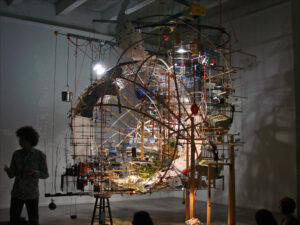 Untitled (Xe Biennale de Lyon)
Untitled (Xe Biennale de Lyon)
Tips for First-Time Visitors to Art Fairs
Starting out at an art fair can be both exciting and a bit overwhelming. It’s important to know the basics and where to turn for help. This will help make your visit more meaningful.
Maximizing Your Art Fair Experience
First-timers should focus on what they love in art. Look at the fair schedule in advance. This lets you choose fairs best suited to your tastes, making your time more enjoyable.
Must-See Booths and Exhibits
Some booths and displays shine brighter than others. Look at the fair’s map and info for these highlights. You can also ask vendors for their top picks. They often know the best places.
Negotiating Purchases and Understanding Pricing
Learning to discuss prices is important at art fairs. It’s not as hard as it seems. Understand what you’re buying and talk openly with sellers. It could make for a great deal.
| Aspect | Tips | Reasons |
|---|---|---|
| Planning Visit | Check the art fair calendar, choose events aligned with your interests. | Efficient time management and enhanced experience. |
| Selecting Exhibits | Study the event’s layout and program; talk to vendors. | Focuses visit on influential and inspirational works. |
| Negotiating Purchases | Understand artwork value, discuss openly with vendors. | Ensures fair transactions and greater satisfaction. |
Unveiling the Hidden Gems: Boutique and Local Art Fairs
Boutique art fairs are key spots to find new talents and get close to fine arts. They’re different from big fairs because they focus on specific art types and build a sense of community. My journey into these charming events shows just how much they mean to artists and art lovers.
On the other hand, local art fairs are all about the community. They help raise the art scene in that area and bring people together to see and feel the local culture. These events strengthen the bond between artists and their audience, which is very important in art’s big picture.
| Features | Boutique Art Fairs | Local Art Fairs |
|---|---|---|
| Focus | Unique, niche artistic themes | Community engagement and local culture |
| Size | Smaller, more intimate gatherings | Variable, often larger community events |
| Artist Benefits | Highly targeted audience, specialized exposure | Increased local recognition and support |
| Collector Benefits | Access to unique and undiscovered talents | Deepening cultural and community ties |
| Typical Locations | Unique venues like boutique hotels, historic sites | Public, more accessible areas like parks and community centers |
Both boutique and local art fairs do more than just gather people for a few days. They help artists grow by giving them a chance to learn and be known. Artists, starting from local fairs, might later feel ready for bigger ones. The caring, family-like vibe of these fairs can really help them along.
Fine art fairs are crucial for connecting high-level art with community art, blending them in a way that boosts both. As I go further, I realize these events turn ordinary spots into places buzzing with extraordinary creative talk.
This intimate focus on smaller-scale events enriches the global art scene, sewing seeds of creativity that blossom in multifaceted ways throughout the art community.
Looking into boutique and local art fairs shows a significant part of the art world. They’re about making art accessible, promoting variety, and getting communities involved. Each place has its own special vibe, and that’s what makes them so valuable.
Best Practices for Art Fair Exhibitors and Vendors
I’m deeply involved in the art world. I’ve seen how great exhibitions change everything at top art fairs. I’ll share key practices to make your display better and more attractive.
Preparation for a Successful Exhibition
Getting ready is key if you want your art to be remembered. Start by picking the best pieces that mirror your style and appeal to the fair’s visitors. Also, learning about the fair’s layout helps in creating a booth that stands out and welcomes everyone.
Marketing Strategies for Maximum Exposure
Having a solid marketing plan is crucial for Art Fair Vendors. It can turn a quiet booth into a popular spot. Using social media and emails beforehand creates buzz and brings people to your booth. It’s also smart to work with bloggers and influencers to get more exposure.
Engaging with Attendees and Selling Your Work
Making a sale is just the start of engaging with visitors. Sharing stories about your art, encouraging questions, and giving thoughtful answers make a big difference. Always make sure to get their contact details for future connections.
| Strategy | Description | Impact |
|---|---|---|
| Dynamic Booth Design | Create an attractive and easy-to-navigate space for visitors. | This approach boosts visitor interest and sales opportunities. |
| Digital Pre-Fair Marketing | Use teaser images and talks about featured art to build excitement online. | Helps to create buzz and attract interested visitors right from the start. |
| Active Selling and Networking | Have meaningful conversations with attendees, answer their queries, and share your contact information. | Directly contributes to immediate sales and the development of future business relations. |
By following these tips, you can make a big impact at an Art Fair. This not only increases your chances of selling but also helps you connect with art lovers and collectors. Remember, your success at these events relies on how well you engage the audience.
Contemporary Art Fairs as a Barometer of Artistic Trends
Contemporary art fairs play a huge role in showing current artistic trends. They are not just about viewing art. They help us see where the art world is going. This is key for those interested in what’s next in art and creativity. Artists, collectors, and fans can learn a lot by looking at what’s popular at these fairs. They give us a peek into the current social and political changes.
Events like the Venice Biennale and Art Basel are major players. They not only show artwork but also start important conversations. These talks often lead to new trends in the art world. So, paying attention to what’s happening at these big fairs can really help you understand the art community.
But the impact of these fairs goes even further. They affect not just the galleries at the fairs but also inspire private shows and online art. In today’s world, where art can be shared so easily, these fairs have found an even bigger audience. They are at the forefront of introducing new artistic styles that everyone can enjoy. So, they remain very important in the art scene.
| Fair Name | Notable Trends | Impact Factor |
|---|---|---|
| Art Basel | Multimedia Installations | High |
| Venice Biennale | Political Commentary | Medium |
| Frieze Art Fair | Virtual Reality Art | Emerging |
The chart above shows the range of topics at these fairs. It proves the immense influence these fairs have in guiding art trends. Contemporary art fairs are essential when it comes to exploring new artistic directions. They are crucial for those wanting to be part of the current art culture.
Capturing the Experience: Photography and Social Media at Art Fairs
Art, culture, and technology meet at art fairs. Social media pairs with art’s timeless nature. This brings an immediacy to the event and extends its impact online.
The Role of Social Media in Art Fair Popularity
Social media acts like a digital art gallery. It helps people interact and engage with art fairs. Live streaming and social sharing make the event feel more communal and open to all.
Do’s and Don’ts of Art Fair Photography
Photography is great for capturing art fair moments. But, we must respect the art and artists.
- Do ask for permission where necessary before snapping photos.
- Do use natural light to avoid distortion of artwork.
- Don’t use flash photography as it can interfere with the inherent qualities of artworks.
- Don’t obstruct the view of other attendees while taking photos.
Expanding Reach Through Digital Storytelling
Digital storytelling does more than document art fairs. It tells engaging stories that draw people in. This approach keeps interest alive and highlights what’s special about the fairs.
| Feature | Benefit |
|---|---|
| Live-streaming sessions | Allows real-time engagement and increases accessibility for global audiences. |
| Curated social media content | Creates sustained interest and engagement long after the event has concluded. |
| Interactive storytelling | Enhances viewer immersion and emotional connection with the event and artists. |
Conclusion
Peculiar Pair, Art Basel Miami Beach
Our exciting trip through art fairs is finishing. These energetic events aren’t just about selling art. They breathe life into today’s art world. At fine art fairs worldwide, there’s a mix of money and culture that shows a world full of new ideas. Whether you walk through huge international shows or cozy local displays, every step is a lesson in modern art.
But, art fairs aren’t only about physical spots anymore. The rise of virtual art fairs changes how we see art. It lets us explore art from around the globe online. Online shows are now key parts of the art world, letting more people join in. They help art reach everyone, no matter where they live.
Looking ahead, I invite you to see both real and online art fairs. They’re great for adding color to your cultural world. Everyone’s role, whether they create, collect, or just enjoy art, helps these events stay important. Together, we make art fairs a key place for sharing ideas and amazing creativity.
FAQ
What are art fairs and why are they important?
Art fairs are big events where people like artists, galleries, and art fans meet. They come to look at, buy, and sell art. These events are key for sharing culture, showing the latest art, and helping artists and galleries be seen more and sell more.
How can one stay updated on upcoming art fair events?
To keep track of art fairs, check out online art fair calendars and art sites. Also, sign up for art fair newsletters. Many art fairs share news and updates on social media too.
What can I expect to see at contemporary art fairs?
You’ll see lots of different types of art, from paintings to performances, at contemporary art fairs. You can interact with the art and meet artists from all over the world.
What opportunities are available for networking at art fairs?
At art fairs, you can meet and talk with artists, galleries, and people who collect art. You can look for chances to work together or make sales. There are also discussions and special events to join.
How do virtual art fairs compare to traditional in-person events?
Virtual art fairs let you see art from anywhere, without travel costs. They have online booths and live events. Even though you don’t see the art in person, it’s easier for more people to join in.
What should a first-time visitor do to make the most out of an art fair visit?
Plan your visit by looking at the fair’s schedule and picking out what you want to see. Make sure to take your time walking around. Try to join talks or tours and talk to the people showing the art to learn more.
Can you purchase art directly at an art fair, and if so, how does pricing work?
Yes, you can buy art right at art fairs. The prices are usually set, but you might be able to talk them down. Prices vary based on the artist’s fame, the art’s size, and more. Always ask for a price list and ask questions if you’re curious.
How are boutique and local art fairs different from major international art fairs?
Boutique and local art fairs are smaller and usually showcase local artists. They often have unique or special art and help new artists. International fairs show a wider range of art from many places and draw a big crowd of people and buyers from around the world.
What strategies should art fair exhibitors deploy for a successful exhibition?
Exhibitors should get ready by knowing who will visit their booth, choosing the right art, and making their space look welcoming. They need to advertise well, talk to new people, share their art’s story, and keep in touch with those contacts after the event.
What impact do contemporary art fairs have on artistic trends?
Contemporary art fairs help set the tone for new art directions by showing fresh ideas and reflecting artistic discussions worldwide. They can influence what people like and where the art market is heading.
How has social media affected the popularity of art fairs?
Social media has made art fairs more known and liked by letting people easily share what they see and do at the fairs. It reaches more people than just those who visit in person. Now, it’s a big part of how fairs let people know about them.

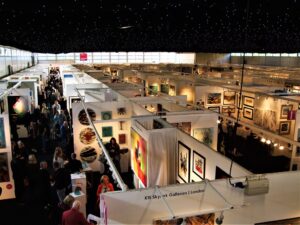
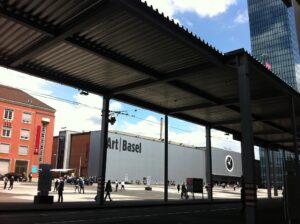 Massive Art Fair
Massive Art Fair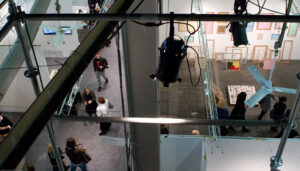
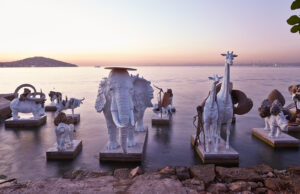
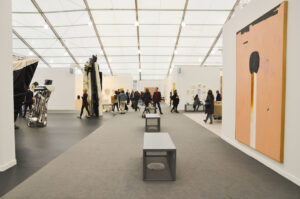
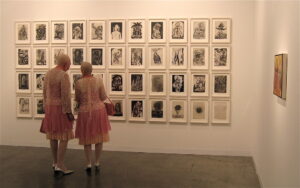
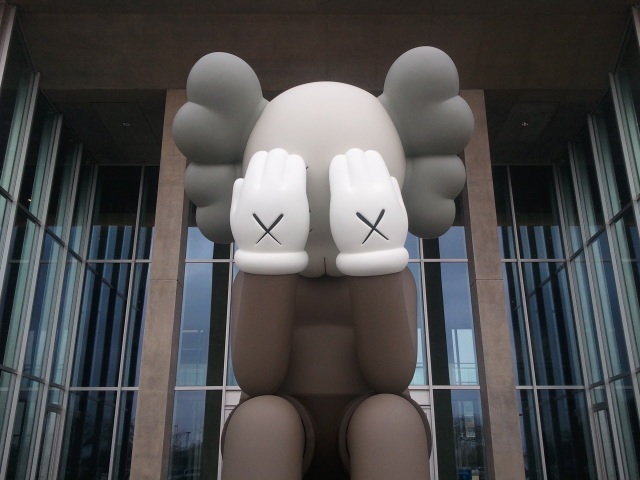
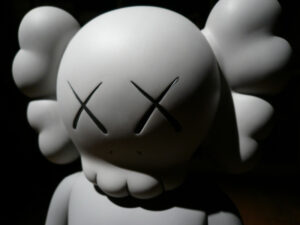
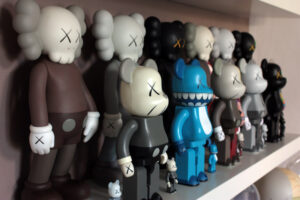 My Kaws collection
My Kaws collection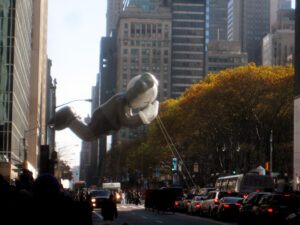
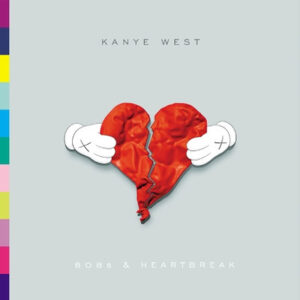
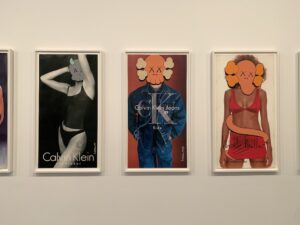 KAWS exhibition
KAWS exhibition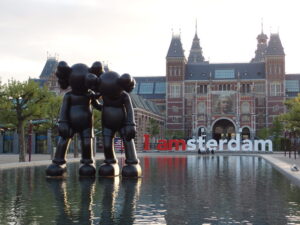
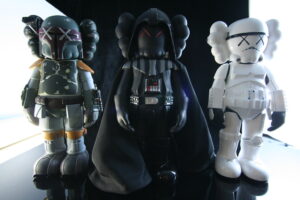 KAWS Star Wars Companions
KAWS Star Wars Companions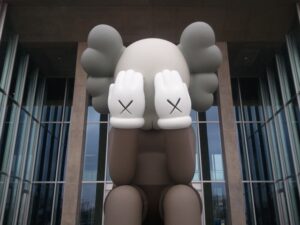 KAWS
KAWS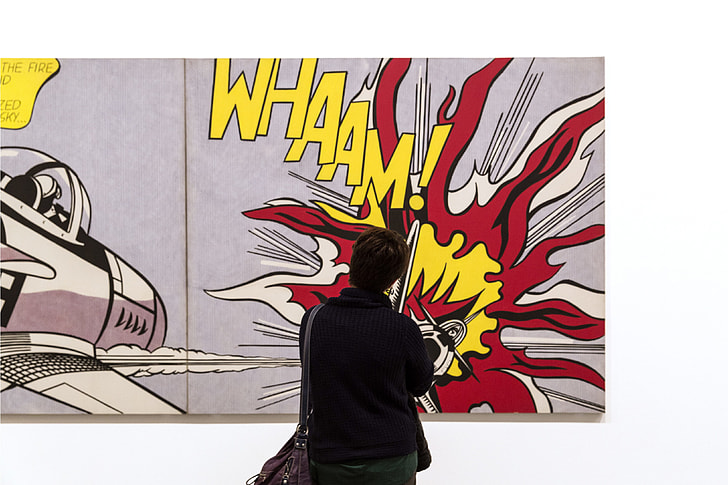
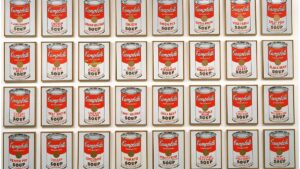 Andy Warhol – Campbel Soup Cans – Sotheby’s – About Pop Art
Andy Warhol – Campbel Soup Cans – Sotheby’s – About Pop Art 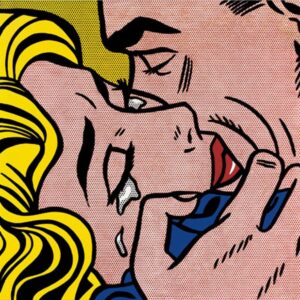
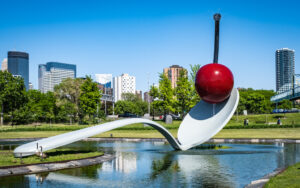
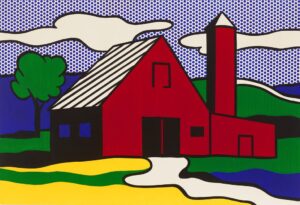 Roy Lichtenstein – Red Barn I [1969]
Roy Lichtenstein – Red Barn I [1969]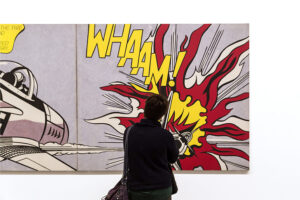 A person looks at pop art by Roy Lichtenstein in an art gallery in London, England
A person looks at pop art by Roy Lichtenstein in an art gallery in London, England
 Red Disaster by Andy Warhol
Red Disaster by Andy Warhol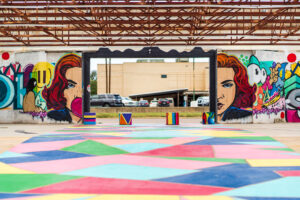 Pop Art Museum | San Angelo
Pop Art Museum | San Angelo